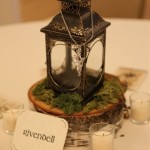Pooja Room Decoration Ideas: Creating a Sacred Space
The pooja room, or prayer room, holds significant importance in many homes. It serves as a sanctuary for spiritual practice, reflection, and connecting with the divine. Decorating this space thoughtfully can enhance its tranquility, fostering a sense of peace and reverence. A well-designed pooja room can be a source of daily inspiration and comfort, enriching the lives of those who use it.
When considering pooja room decoration, several factors come into play. These include the size and layout of the room, the existing architectural style of the house, personal preferences in terms of aesthetics, and the specific deities and rituals practiced. It's important to strike a balance between functionality and visual appeal, ensuring the space is both practical for prayer and visually pleasing.
The selection of materials, colors, and lighting plays a crucial role in creating the desired atmosphere. Natural materials like wood and stone are often favored for their grounding qualities. Colors such as white, cream, and gold are commonly used to promote serenity and purity. Soft, diffused lighting can further enhance the ambiance, creating a calming and inviting space.
Beyond the foundational elements, incorporating decorative items such as statues, paintings, floral arrangements, and religious texts can add character and depth to the pooja room. These elements should be chosen carefully to reflect personal beliefs and preferences, creating a space that resonates with the individual.
Optimizing Space and Layout
Regardless of the size of the pooja room, efficient space utilization is paramount. Even a small corner can be transformed into a dedicated prayer area with careful planning. In larger homes, a separate room can be dedicated to this purpose, allowing for more elaborate decorations and arrangements.
For small spaces, a wall-mounted shelf or a corner unit can serve as a compact altar. Mirrors can be used to create the illusion of more space, making the room feel less confined. Utilizing vertical space with tiered shelves or hanging decorations can also help maximize storage and display options.
In larger rooms, the layout should facilitate movement and accommodate multiple individuals if necessary. A central focal point, such as a statue or a portrait of a deity, can be established. Seating arrangements, such as cushions or a small bench, can create a comfortable and inviting space for extended prayer or meditation sessions. Maintaining a clear path of access and avoiding clutter is essential for creating a peaceful and functional environment.
The orientation of the pooja room can also be considered. In some traditions, it is believed that facing a particular direction, such as east, can enhance the spiritual benefits of prayer. However, this is a matter of personal belief and should be considered alongside practical considerations such as the availability of natural light and the existing layout of the home.
Ultimately, the goal is to create a space that feels both sacred and accessible. The layout should be conducive to prayer and meditation, while also reflecting personal preferences and aesthetic sensitivities.
Selecting the Right Materials and Colors
The materials and colors used in the pooja room contribute significantly to its overall atmosphere. Natural materials such as wood, stone, and copper are often preferred for their earthy and grounding qualities. These materials can help create a sense of connection to nature, fostering a feeling of peace and tranquility.
Wood is a versatile material that can be used for furniture, shelving, and wall paneling. Its warm tones and natural grain patterns can add depth and character to the space. Stone, such as marble or granite, can be used for flooring or countertops, providing a durable and elegant surface. Copper is often used for idols, lamps, and other decorative items, adding a touch of traditional elegance.
In terms of color, lighter shades are generally preferred in pooja rooms. White, cream, and beige are commonly used to promote serenity and purity. These colors also reflect light, making the space feel brighter and more open. Gold accents can be used to add a touch of richness and elegance.
However, the choice of colors is ultimately a matter of personal preference. Some individuals may prefer to incorporate brighter colors, such as yellow or orange, to create a more vibrant and energetic atmosphere. It's important to choose colors that resonate with personal beliefs and preferences, creating a space that feels both sacred and inviting.
In addition to the primary colors, consider using complementary colors to create visual interest. For example, a white room can be accented with touches of green or blue to create a calming and harmonious effect. The use of natural textures, such as jute or cotton, can also add warmth and depth to the space.
Care should be taken to ensure that the materials and colors used are durable and easy to maintain. A pooja room should be a clean and serene space, and the materials chosen should be resistant to stains and easy to clean. Natural materials, such as wood and stone, can be sealed to protect them from moisture and damage.
Incorporating Decorative Elements and Lighting
Decorative elements can add personality and depth to the pooja room, reflecting personal beliefs and aesthetic preferences. These elements can include statues, paintings, floral arrangements, religious texts, and other objects that hold personal significance.
Statues of deities are a common feature in many pooja rooms. These statues can be made from various materials, such as brass, stone, or wood. The choice of deity and material is often based on personal beliefs and traditions. Paintings and prints depicting religious scenes or symbols can also add visual interest and depth to the space.
Floral arrangements can bring life and freshness to the pooja room. Fresh flowers, such as roses, lilies, and jasmine, are often used for their beauty and fragrance. Artificial flowers can also be used, especially in areas where fresh flowers are difficult to maintain. Green plants can also add a touch of nature to the space.
Religious texts, such as the Bhagavad Gita or the Ramayana, can be displayed in the pooja room. These texts can serve as a source of inspiration and guidance. Other decorative items, such as candles, incense burners, and prayer beads, can also add to the ambiance of the space.
Lighting plays a crucial role in creating the desired atmosphere in the pooja room. Soft, diffused lighting is generally preferred to create a calming and inviting space. Natural light is ideal, but if natural light is limited, artificial lighting can be used to supplement it. Lamps, sconces, and recessed lighting can all be used to create the desired effect.
Consider using dimmer switches to control the intensity of the lighting. This allows for adjusting the ambiance depending on the time of day and the type of activity being performed. Candles can also be used to create a warm and intimate atmosphere, but care should be taken to ensure that they are used safely. Incense burners can also add to the ambiance, but it's important to use them in a well-ventilated area.
The thoughtful incorporation of decorative elements and lighting can transform the pooja room into a truly sacred and inspiring space. The key is to choose elements that resonate with personal beliefs and preferences, creating a space that feels both peaceful and inviting.
In addition to these core elements, consider adding elements that reflect the changing seasons or specific festivals. This can help keep the pooja room feeling fresh and vibrant throughout the year. For example, during Diwali, the pooja room can be decorated with diyas (oil lamps) and rangoli (colorful patterns made with powder). During other festivals, special decorations and offerings can be incorporated to celebrate the occasion.
Ultimately, the decoration of the pooja room is a personal journey. There are no hard and fast rules, and the most important thing is to create a space that feels both sacred and comfortable. By carefully considering the size and layout of the room, the materials and colors used, and the decorative elements and lighting incorporated, it is possible to create a pooja room that is a true reflection of personal beliefs and a source of daily inspiration.

Best Pooja Room Decor Ideas Traditional And Easy To Use

Best Pooja Room Decor Ideas Traditional And Easy To Use

Traditional Pooja Room Designs For Your Home Designcafe

15 Best Pooja Room Decoration Ideas How To Get The Look For Your Ancient Madurai

Decorate Your Pooja Room This Diwali Season With Amazing Décor Ideas

15 Stunning Home Temple Design Ideas Mandir Decoration

Pooja Room Door Design Rooms

Budget Friendly Garden Decoration For Small Places In 2025 N Room Decor Pooja Door Design Temple Home

3 Easy Pooja Room Decoration Ideas For Festivals Laksmi

Best Pooja Room Decor Ideas Traditional And Easy To Use
Related Posts







